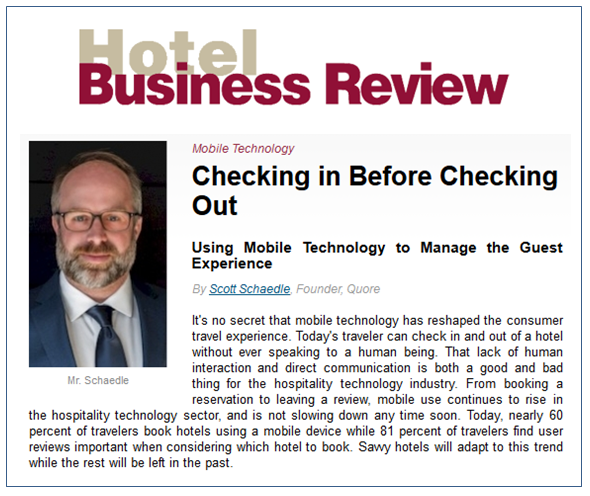Sometime in the mid-2000s, the term “Subject Matter Expert,” or SME cropped up and would not go away. Aside from Captain Hook’s trusty sidekick, there were suddenly legal SMEs, software SMEs, marketing SMEs…you get the picture. Today there is a renewed focus on leveraging this influx of SMEs by disseminating their expertise to the masses in a practice called thought leadership.
Thought leadership is one spoke of the holy wheel of content marketing and is a crucial component to positioning leaders as industry experts to boost brand affinity with existing and potential customers. Simply defined, thought leadership is the act of positioning authorities on subjects that address critical or timely industry questions for a particular customer set.
Here are 8 tactics to apply to your thought leadership strategy:
ESTABLISH YOUR VALUE PROPOSITION
The first step to creating a thought leadership strategy is to tap into your knowledge by identifying key topics of expertise and focus areas. What can you say you’re an authority on that no one else can? And – more importantly – how does that skillset translate to your overall business goals? Developing a value proposition will inform every other element of your strategy, so it’s important to carefully define these areas.
KNOW THY CUSTOMER
If you don’t already have one, create customer personas that dissect how your customer proactively seeks information to make informed decisions. When looking for answers to their most burning questions, where are your customers going? What are they reading? Who’s influencing them?
BUILD A TOOLKIT
The last step to building the foundation of your strategy is to create your expert toolkit. This should include a professional headshot, bio, past published materials, videos and a potentially a website that includes a media kit and contact information.
CREATE COLLATERAL
Start crafting written pieces on one or more of the topics identified that can be contributed to your target outlet list. Here a few ways to get started:
- News Jacking: The best way to get your foot in the door with tier 1 broadcast, online or print media is by hijacking what’s hot in the news right now and offering yourself as an expert resource. We did a bit of newsjacking recently by capitalizing on Donald Trump’s trillion-dollar infrastructure plan paid by tax credits. Florida is taking a different approach to infrastructure improvements with Brightline, a privately funded new high-speed passenger express train. We offered up Brightline executives to contribute to the conversation of successful privately funded infrastructure projects, resulting in lots of coverage.
- Industry Predictions: Niche trade publications love to hear from experts on their insights and predictions for the future of their industry. One great way to do this is by offering your expertise ahead of the new year or a big milestone to weigh in on the trends coming down the pike. Last year, we arranged for The Beach Company’s VP of Development to Multihousing News to discuss key investment sectors for 2017 multifamily industry.
- Evergreen Content: Build out general best practices that have led to your success today. What business principles do you live by that you can impart to others? One of our clients in the hospitality technology space recently created wrote a byline on the best practices for optimizing guest experiences through technology, which was well-received by the company’s customers.
- Op-Eds: The best thought leaders have opinions – sometimes strong ones – about topics affecting their industry, so don’t be afraid to take a stance. A great place to start is by writing an opinion editorial and submitting to relevant newspapers. Smart Cities Guru Anil Ahuja recently took a stance on how D.C. can reinforce and invest in smart infrastructure, resulting in an op-ed in The Washington Post.
SEEK OUT SPEAKING ENGAGEMENTS
Once you’ve identified where your customers are going to glean industry information and network with likeminded individuals, nominate your leader for a panelist or keynote speaking engagement to share their industry expertise and valuable insights on a certain topic.
PUBLISH, PUBLISH, PUBLISH
As a leading authority on your subject matter, the content you create will serve as the tent poles to your thought leadership strategy. If the thought of filling a book with your knowledge makes you queasy, start small. Blog posts are one great way to share your expertise while boosting SEO on your site. A free downloadable e-book (in exchange for an e-mail address, of course) is another smart way to establish yourself as an expert. If the word book still makes you nauseous, ask likeminded experts to contribute chapters to your e-book. Another way to capture leads through content is by publishing a white paper, a structured, detailed report that offers a solution to a particular issue in your industry.
AWARD NOMINATIONS
Another way to establish authority is by nominating your company or yourself for relevant awards. This includes local CEO awards, fastest growing company and best places to work designations, most influential people, etc. Awards are a smart way to boost employee morale, recruit top-tier talent, maintain brand trust with existing customers and woo potential customers.
CONTRIBUTE TO THE CONVERSATION
Never lose sight of the power of social media. As a leader, it’s imperative that you remain informed on your particular topic of expertise, as news will likely hit social media before it’s a “thing” anywhere else. Reactively, follow other influencers and pay attention to what they’re saying. Proactively, contribute to the conversation with your own opinions. You’re a thought leader, so people want to hear what you have to say!
In every tactic that you deploy in your l thought leadership strategy, make sure you create a two-way dialogue between yourself and your audience by providing a path to continue the conversation. This can be as simple as linking to your website in a byline or as robust as providing workbooks at a speaking engagement. Capitalize on this captive audience by providing them with at least one outlet to learn more about you or your brand.
A word to the wise: Self-promotion is a big no-no in the world of thought leadership and can quickly backfire if your audience catches one whiff of it. Instead of plugging your brand, tap into your capabilities by offering information to clearly connect to your audience. It’s fine to pepper in anecdotes or success stories as long as there is a strong correlation to the audience. In that sense, thought leadership may require a paradigm shift from traditional marketing.
With these eight tactics, you’ll be well on your way to crafting a well-rounded thought leadership plan to strengthen your brand. Don’t forget to maximize your wins by sharing your coverage (like to Melanie’s new blog post) along the way!




